June 11, 2007
Jack’s weather report:
It is cloudy today and colder than it has been the last several days.
Temp: 32 °F
Winds out of the east at 12 to 14 knots
Wind Chill: low teens
Relative humidity: 100%
I slept better last night although I continue to wake up several times a night. I immediately wonder what time it is. After clearing my head, I reach over and struggle to find my indiglo timex watch….2:30 – 4:30 – 6:00 – 6:45….ok, it is time to get up and take a shower, which is in the dormitory style bathroom complete with 5 stalls, 7 sinks, 6 showers, and 2 washer/dryer sets. Being a researcher, field manager, or field assistant does not give you preference to housing. Welcome to the NARL Hotel…..
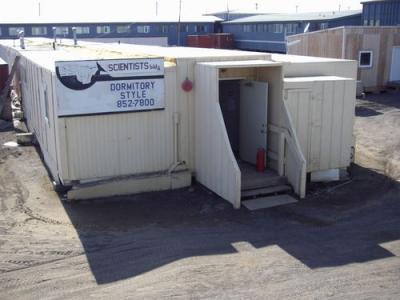
The NARL Hotel: My home for the next four weeks
NARL (Naval Arctic Research Lab) is the former name of BASC (Barrow Arctic Science Consortium) and has stuck around. Steve remembers them being here. BASC was formed in 1995 after the navy had pulled out.
I decided to wear my insulated khakis today, mainly because I am getting tired of wearing the same pants over and over. It turned out ok. They are warm enough without having to wear thermals. It was off to breakfast: cereal, biscuit with SC honey, bacon, and a grapefruit half: hot tea for a drink. I ate with Steve and Paulo. Steve is the PI, primary investigator on the research, and Paulo is the field manager. Our discussions during meals are usually light hearted and cover a wide range of topics. We generally don’t talk shop.
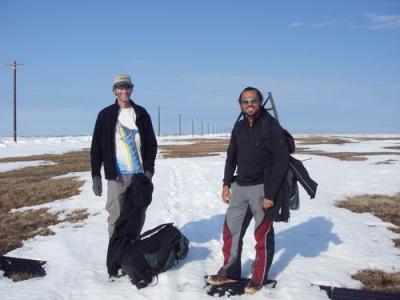
Steve Oberbauer and Paulo Olivas
It was on to our lab and office area found at BASC room 213. The pictures should give you a better idea. We each have our spots and spend a lot of time at our respective computers.

MY SPACE
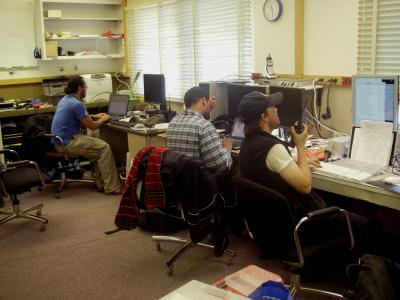
Paulo, Santonu, and Perry at work in our lab/office
Santonu and Perry from UTEP share the room with us. Here they are hard at work in the field. Don’t let the picture fool you. They do work hard and breaks are needed.
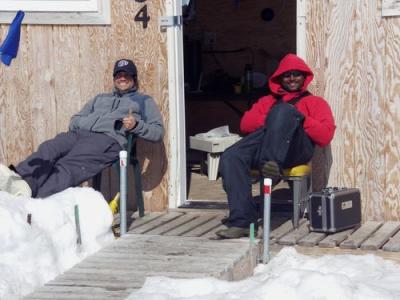
Perry and Santonu resting outside the comtrol shed at the biocomplexity site
After spending 30 to 45 minutes checking e-mail, the polar TREC website, and sending replies, Steve, Paulo and I packed up for the field. It is customary to ask each other, "Are you going to the field today?” Meaning, "Are you going outside and do the science you came here to do?” The thing is, time in the lab and office is as important as time in the field and can’t be avoided. If you haven’t prepared properly for the field, your time there can all be wasted. It’s a long way out there and a long way back if you forgot to bring something that is critical for the day.
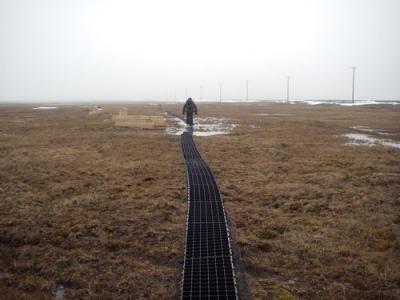
Paulo leads the way over the tundra
We loaded up and headed out. The drive to the BEO, Barrow Environmental ObservatoryA location used for observing terrestrial and/or celestial events., is about three miles. From the parking spot it is another .75 mile hike over the tundra to the biocomplexity research site. That is our site, where we will be measuring carbon flux at the micro scale on the surface of the tundra. Walking out with the equipment is not as easy as you might think in our XTRATUF neoprene boots. I carried a 12 volt battery in my pack, along with extra clothes. You don’t want to be cold.
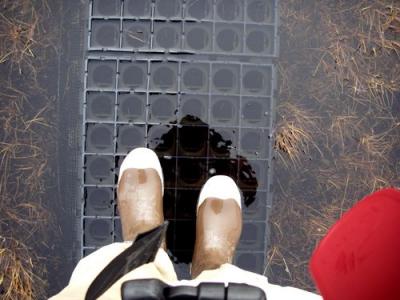
Me and my neoprene boots...see why you need them?
The change on the tundra is even more dramatic. It just doesn’t look like the same place as it did just three days ago. This pictures tell the story.
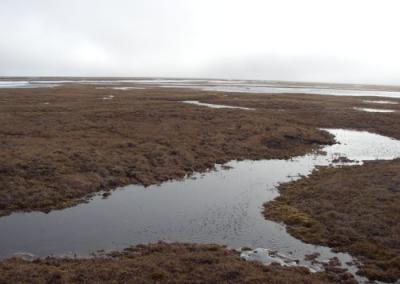
This was covered with snow and ice just a few days ago
The goal for our field work was to begin wiring for the thermocouples. These are used to measure the surface temperatures of the research site. The box Paulo is wiring in this photo is the same one as this other picture shows. Notice the dates and difference in the snow levels.

Paulo working June 3, 2007
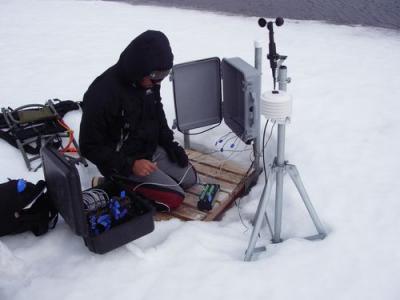
Paulo working June 11, 2007
You might be asking why there is so much snow still left here when my other tundra pictures are showing almost no snow. It seems the boardwalks and equipment placed at the site have inadvertently served as snow fences, such as the one in this picture, which the community sets these out to block the blowing snow from drifting around houses and other buildings. They seem to work fairly well.
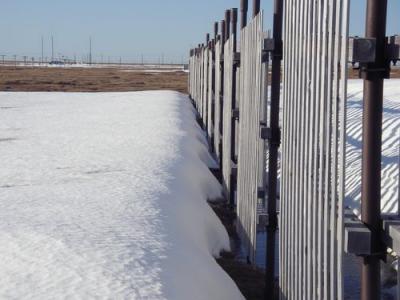
Snow Fence
Our work takes us to lunch time and then it’s back to BASC for one of the better lunches we have had. Today was, "make your own sandwich.” Mine was a roast beef with swiss cheese. I also had a bowl of split pea soup. There were other options if the sandwich didn’t suit. My plate also has a small portion of chicken and dumplings. The kitchen staff does a good job with them.
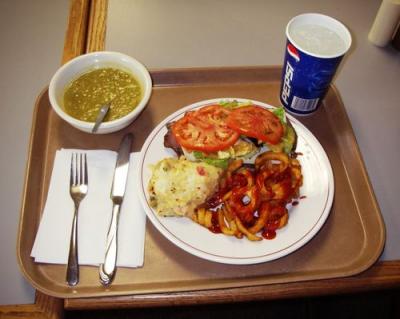
Lunch at BASC
The afternoon has been filled with working back in the lab/office. I have spent a lot of time managing photo files. I am taking more pictures than I ever have in my entire life. Loading them, deleting the bad ones, naming the rest, and trying to decide which ones go in my photo gallery takes lots of time. Steve and I also did a little more outside work with the NDVI (Normalized Difference Vegetation Index) cameras. The NDVI indicates the presence of live green vegetation in the photo area. It is important to the project’s goal of quantifying carbon changes in the tundra soil and vegetation and whether these changes will add or remove carbon from the atmosphere.
This took all afternoon.
Around 7:30 we took off for Pe Pe’s Restaurant to celebrate Dave Lin’s birthday. The food was good and I came out stuffed like a Thanksgiving turkey. Back to the lab and just finishing today’s journal. It’s after 10:00 p.m.
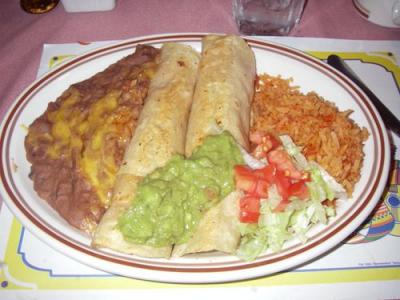
Dinner at Pe Pe's
I’m going out to Point Barrow tomorrow to the archaeological dig. It may be my best chance to see a polar bear. Stay tuned to see if I do……….
Good night from the top of the world…Barrow Alaska.


Comments